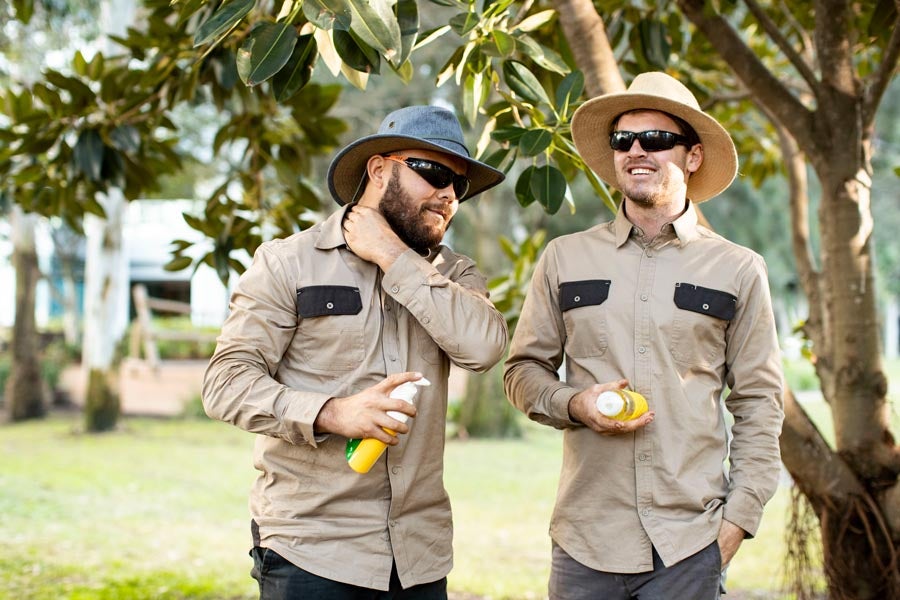Preventing skin cancer
How to protect your skin from the sun

Protect your skin
For best protection, we recommend a combination of sun protection measures:
- Slip on some sun-protective clothing that covers as much skin as possible.
- Slop on SPF 50 or SPF50+, broad-spectrum, water-resistant sunscreen.. Put it on 20 minutes before you go outdoors and every two hours afterwards. Sunscreen should never be used to extend the time you spend in the sun.
- Slap on a hat – broad brim or legionnaire style to protect your face, head, neck and ears.
- Seek shade.
- Slide on some sunglasses – make sure they meet Australian Standards.
UV Index
UV radiation is dangerous because it’s not like the sun’s light which we see, or the sun’s heat which we feel, so it can be damaging our skin without us knowing.
Our free SunSmart Global UV app puts sun protection advice at your fingertips.
The SunSmart Global UV app provides reliable at-a-glance real-time and forecast UV levels for locations across Australia and the world from reputable and trusted agencies and translates this data into clear, evidence-based health advice from Cancer Council Victoria to recommend sun protection for your location.
If you’ve downloaded the previous version of the SunSmart app, delete it from your phone and download our new SunSmart Global UV app for your daily UV and sun protection information. The current SunSmart app will be removed from the app store in July 2023.
Applying sunscreen
Cancer Council recommends using sunscreen every day on days when the UV Index is forecast to be 3 or above. Sunscreen should be incorporated into your daily morning routine on these days.
Sunscreen should be applied 20 minutes before exposure to UV in order to create the intended protective barrier. It should be applied liberally and evenly to clean and dry skin.
For an adult, the recommended application is 5mL (approximately one teaspoon) for each arm, leg, body front, body back and face (including neck and ears). That equates to a total of 35mL (approximately seven teaspoons) for a full body application.
When spending time outdoors, sunscreen should always be reapplied at least every two hours, irrespective of the water resistance of the sunscreen. Swimming, sport, sweating and towel drying can reduce the effectiveness of the product, so sunscreen should always be reapplied after these activities.
Australians shouldn't expose themselves to potentially harmful UV in order to get more vitamin D. Research suggests that prolonged exposure to doesn't cause vitamin D levels to continue to increase further. When UV levels are3 or above, most Australians get enough vitamin D with just a few minutes of sun exposure while completing everyday tasks such as walking to the shops.
While effective when used the right way, it is difficult to correctly apply aerosol sunscreen to get adequate protection. For this reason, Cancer Council does not recommend using aerosol sunscreens.
Sunscreen isn't a suit of armour. It should be used alongside protective clothing, a broad-brim hat, shade and sunglasses.
cancercouncilshop.org.au
Sun protection and babies
It is important to ensure that babies are well protected from the sun. Childhood sun exposure contributes significantly to the lifetime risk of skin cancer, and babies' skin can burn easily.
Cancer Council recommends keeping babies away from direct sunlight as much as possible when UV levels are 3 or above. Plan daily activities to ensure the baby is well protected from the sun and aim to minimise time outside when UV levels are at their strongest.
When this is not possible, ensure that babies are protected from the sun by shade, protective clothing and a hat. Check the baby's clothing, hat and shade positioning regularly to ensure they continue to be well protected from UV.
Cancer Council does not recommend the use of sunscreen on babies under six months old.
Learn more about how to be SunSmart
